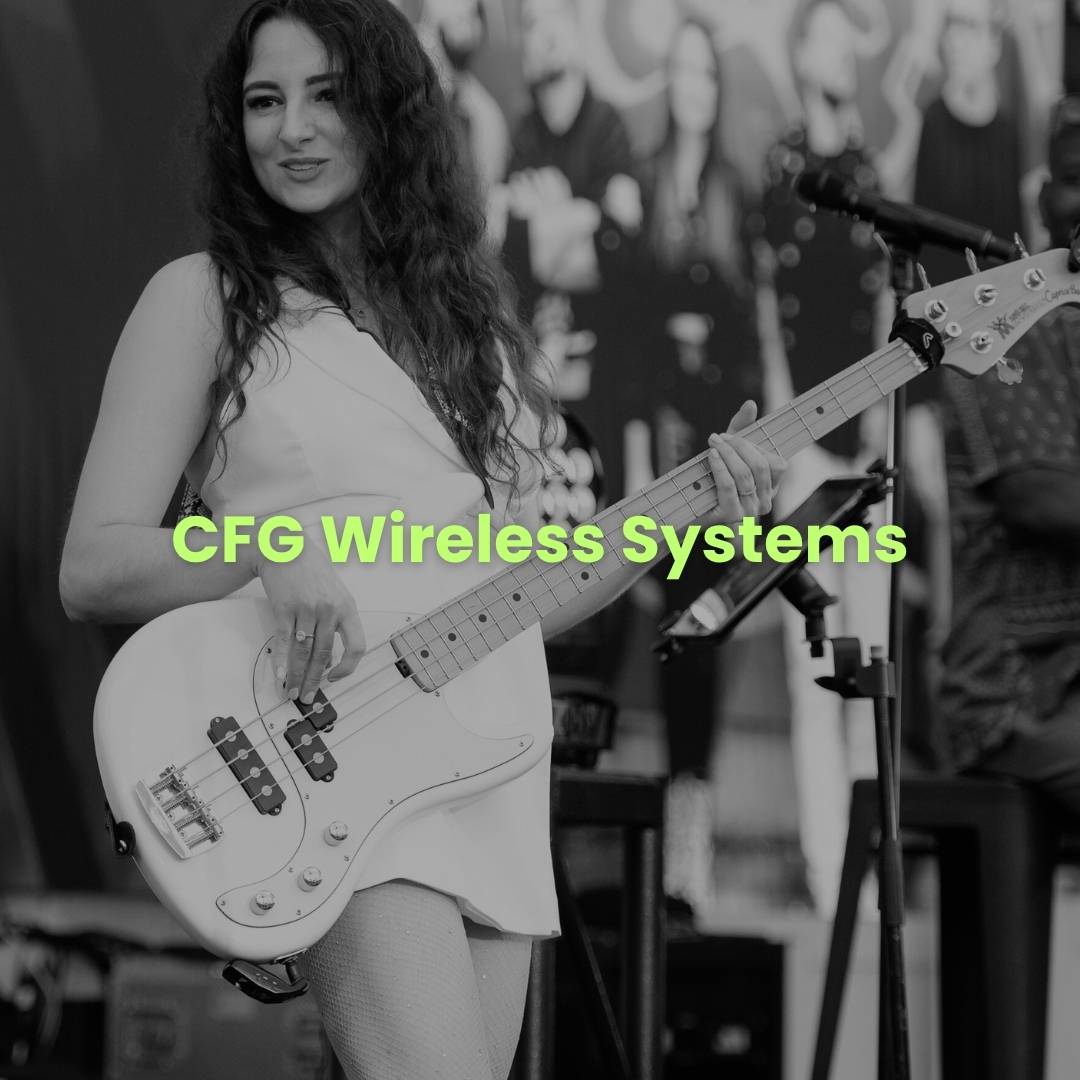Wireless technology: it's something most musicians take for granted nowadays, whether you’re shredding in a garage band or headlining a packed stadium. But how did we get here? How did the once-bulky, unreliable wireless setups of the past become the slick, dependable systems we see today?
Join me as we take a journey through time, from the first wireless transmissions to today’s advanced gear, and see how wireless tech transformed the music industry. And if you’re still on the fence about cutting the cord, we’ll also explore how modern systems bring wireless freedom to the forefront for today’s musicians.
The Birth of Wireless Transmission: From Theory to Reality
Our story begins way back in the late 19th century, when the idea of wireless communication was still the stuff of science fiction. A couple of brilliant minds, Nikola Tesla and Guglielmo Marconi, were among the first to turn that fantasy into reality. Marconi, in particular, made history in 1901 by sending the first transatlantic wireless signal—a real breakthrough moment for the world of communication.
Now, Marconi wasn’t thinking about guitars or live shows. His focus was on things like telegraphs and ship-to-shore communication. But it was the foundation he and others laid that would eventually open the door for wireless audio transmission. In fact, the first time people heard music over the airwaves was via early radio transmissions. So in a way, music and wireless have always been intertwined—though it took a few more decades before musicians themselves started to ditch the cables.
First Steps: The Introduction of Wireless in the Music Industry
Fast forward to the 1970s, and musicians were starting to wonder: “What if I didn’t have to be tethered to my amp with a cable?” Sure, guitar cables were (and still are) reliable, but they’re also limiting. Ever seen a guitarist trip over their own cable? Yeah, not ideal.
That’s when some brave souls decided to take the plunge into wireless. One of the earliest pioneers was a company called Vega, which introduced the first wireless guitar systems. The setup was clunky and far from perfect, but for those willing to experiment, it meant newfound freedom on stage.
Who was the first band to go fully wireless? It’s often credited to The Grateful Dead in the early ‘70s. Their sound engineer, Alembic, experimented with wireless guitar setups so the band could roam freely during their famously long jam sessions. It was revolutionary for the time but came with its fair share of problems.
Challenges of Early Wireless Systems
Let me tell you, those early systems weren’t exactly plug-and-play. Interference was a big issue. You’d be in the middle of a solo, and suddenly, you’d pick up a radio station or even worse—nothing at all. The range was limited, battery life was sketchy, and the sound wasn’t always up to par with a good ol’ cable.
“Back then, going wireless meant accepting the fact that your guitar signal might vanish just when you needed it most. It was like rolling the dice every time you stepped on stage.”
But the idea was planted, and it wasn’t going away.
Evolution of Wireless Tech: From Niche to Necessity
In the '80s and '90s, things really started to get interesting. Wireless systems improved dramatically, thanks in large part to advances in frequency modulation (FM) and later UHF systems. These upgrades brought clearer signals, fewer dropouts, and better range. No more worrying about tuning into the local talk radio while cranking out a solo!
Notable Example: Eddie Van Halen
One of the most famous early adopters of wireless technology was Eddie Van Halen. Now, Eddie wasn’t just a wizard on the fretboard—he was also a gearhead who loved experimenting with new tech. Going wireless meant Eddie could run across massive stages without ever worrying about his tone cutting out or getting tangled in cables.
“Van Halen’s stage antics were wild enough without cables to trip over. Going wireless just took his act to the next level. Plus, can you imagine trying to pull off those iconic ‘flying-kick’ moves while dodging a guitar cable? Nope.”
The Digital Era: Going Full Wireless
By the early 2000s, the game changed yet again. Digital wireless systems hit the scene, offering vastly improved sound quality, extended range, and minimal latency. It’s like someone finally answered the prayers of every musician who’d been burned by a bad wireless experience in the past.
With digital systems, gone were the days of signal interference and audio degradation. Systems could hop across multiple frequencies, avoiding crowded RF environments, and latency was so low that most musicians couldn’t even notice a difference from a cable.
Not to mention, it wasn’t just guitars going wireless anymore. Vocalists, drummers, and everyone in between started using in-ear monitors (IEMs), giving them the freedom to move all over the stage without sacrificing sound quality or monitoring clarity.
Wireless in 2024: From Bars to Stadiums
Fast forward to today, and wireless systems are as common as guitar pedals. Whether you're playing in a local bar or tearing it up in a stadium, wireless technology is now so reliable and affordable that even small-time gigging musicians can easily incorporate it into their setups. Plus, the days of bulky belt packs and confusing frequency settings are long gone.
“These days, if you see a guitarist chained to a cable, it almost feels nostalgic... or maybe they just like the danger!”
How CFG Continues the Wireless Revolution
Now, let’s talk about how CFG has been keeping this wireless tradition alive and kicking with two standout models: the CF-80 and the SonikSphere.
The CF-80 2.4Ghz: Power, Simplicity, and Reliability
The CF-80 is all about delivering pro-level performance without the hassle. With its extended range, ultra-low latency, and long battery life, it’s the perfect wireless system for anyone playing mid-sized venues or even large stages. It’s simple to set up, reliable, and sounds fantastic.
“The CF-80 reminds me of the ‘set it and forget it’ mentality—no fuss, no stress, just great wireless sound.”
The SonikSphere 5.8GHz: Ultimate Control for the Pros
For the pro-level musician, the SonikSphere is the ultimate wireless rig. It’s designed to handle the most demanding environments, whether you’re playing to a crowd of 50 or 50,000. With 6 channel-banks to dodge interference and dynamic range compression, it keeps your sound crystal clear—even in crowded RF environments.
The Future of Wireless Technology in Music
So what’s next? With the way wireless technology is advancing, we’re likely to see even more improvements in the coming years—think 5G integration, zero-latency systems, and AI-powered interference avoidance.
One thing’s for sure: CFG is ready to lead the charge, continuing to innovate and push the boundaries of what wireless systems can do.
Closing Thoughts
Wireless technology has come a long way since Marconi’s first crackly transmission across the Atlantic. From clunky, unreliable early systems to today’s ultra-sleek setups, wireless tech has transformed the way musicians perform live.
If you’ve been hesitant to cut the cord, now’s the time to explore the freedom that wireless systems provide. Check out CFG’s CF-80 and SonikSphere and take the next step in your own musical evolution!







